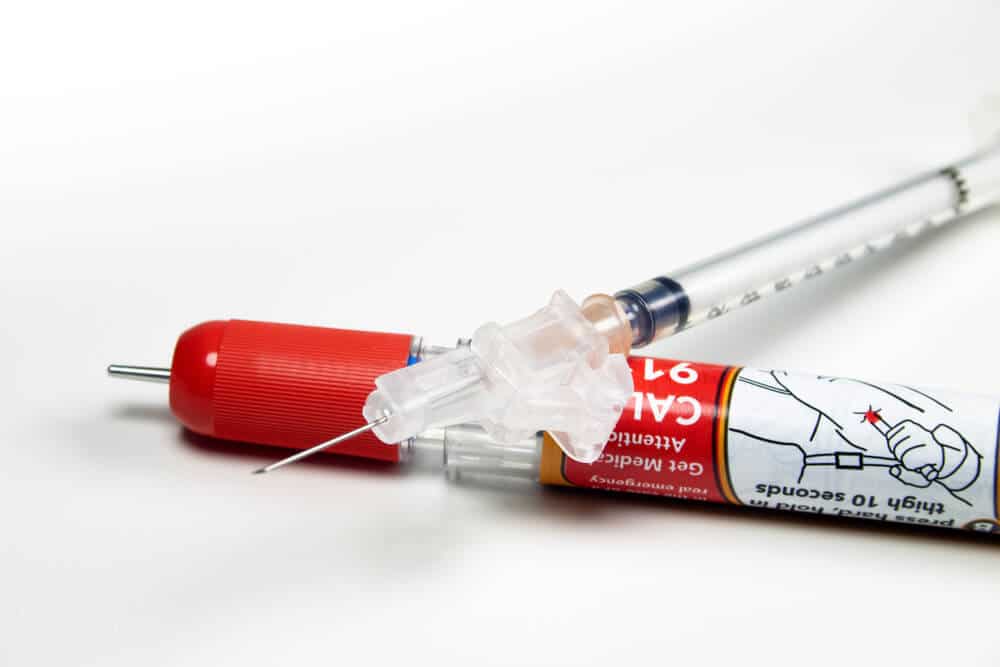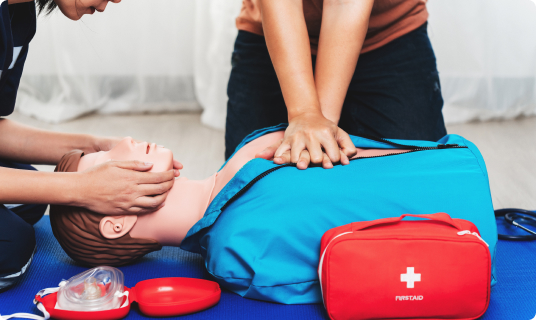
Common Allergy Triggers
People can have allergic reactions to many different things, including:
- Animals like cats or dogs
- Ant or bee stings
- Chocolate or eggs
- Certain medications, such as penicillin
- Peanuts
- Pollen, mold, or dust
- Specific plants or chemicals in plants
- Wasp stings
Signs and Symptoms
Allergic reactions may cause:
- Nausea, vomiting, or diarrhea
- Swelling of the tongue or face
- Sneezing or a stuffy nose
Example: Anaphylaxis and What to Do
Anaphylaxis is a severe allergic reaction that can happen within seconds or minutes of exposure to an allergen. It can cause swelling in the airway, difficulty breathing, and even lead to shock. This condition is life-threatening and must be treated immediately.
First Aid Steps:
Check the scene and make sure it’s safe, then:
- Call 9-1-1
- Get a First Aid kit if one is nearby
- If the person has an epinephrine auto-injector and is responsive, help them retrieve it
- They may be able to give themselves the injection. If you’re allowed to assist, ask for permission and give the shot
- Rub the injection area for 10 seconds, dispose of the device properly, and note the time it was given
- If the person becomes unresponsive, begin Cardiopulmonary Resuscitation (CPR). If you’re not trained in full CPR, give Hands-Only CPR
This chapter in your Online First Aid Course prepares you to act quickly and confidently when someone experiences a severe allergic reaction.
